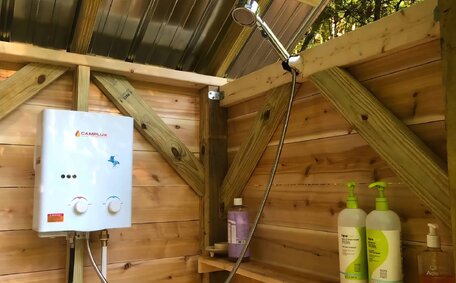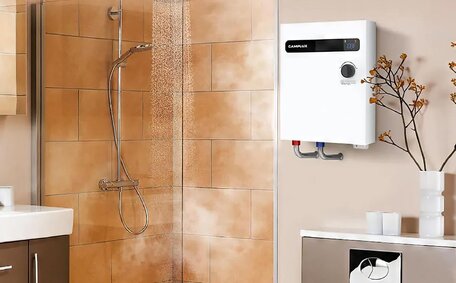What Causes A Noisy Toilet?
Toilet disturbances such as foghorn, hissing, gurgling, or banging noises often point to fill valve issues. Noisy toilet tanks are commonly due to issues with the fill valve, flush valve, refill tube, or water supply line.
A common culprit for fill valve noise is a malfunctioning or incorrectly calibrated unit that requires thorough inspection. Issues with the flush valve, including a worn flapper, can also lead to noises when water rushes into toilet bowl.
The fill valve regulates water into the tank during flushing; malfunctions can result in persistent hissing, gurgling, or running.
Refill tube issues can cause noises as water is directed from the fill valve to the overflow tube during flushing. Likewise, issues with water your supply pressure in pipes leading into your toilet can result in hammering or banging noises.
Gurgling noises often result from a blocked or kinked tube impeding water flow into the bowl.
Understanding the function of toilet components enables you to identify the cause of noises when your toilet is in use. Investigate common issues with fill valves, flush valves, and refill tubes to devise solutions for silencing your toilet.
Common Toilet Noises And What They Mean
The variety of noises your toilet tank makes can be crucial clues to identifying underlying issues. Certain fill valve faults may be behind the most typical noises your toilet produces, offering insight into potential issues:
Hissing Noise
Hissing noises typically indicate air in the system, often due to a malfunctioning flush mechanism or water expulsion issues. Common causes are:
- Toilet hissing due to your toilet water continues to run because of a faulty fill valve not shutting off properly
- Problems with the flush valve or flapper
- Low water level in tank
- Crack or hole in tank
Gurgling Noise
Gurgling noises suggest a blockage or problems with the refill tube during the toilet’s refill process. Fixes include:
- Clearing debris from the refill tube can take just a few minutes
- Adjusting the refill tube
- Replacing the fill valve
Running Water Noise
Persisting running water sounds may indicate:
- Faulty fill valve not shutting off
- Incorrectly adjusted float arm
- Overflow tube issue
- Problem with the flapper valve seal
Banging Noise
Banging or hammering noises, known as water hammer, often result from abrupt water pressure changes post-flushing. Solutions involve:
- Installing water hammer arrestors
- Adjusting water pressure
- Replacing fill valve
- Fixing air pockets in plumbing
Comprehending common toilet noises and their origins aids in diagnosing problems to quieten a noisy toilet, but engage a professional when necessary.
Fill Valve Issues
The fill valve plays a crucial role in the toilet refilling process after you flush toilet. Statistical insights reveal that issues with the top fill valve, specifically, account for approximately 75% of incessant toilet auditory disturbances. If you hear your toilet making a loud hissing or squealing sound after flushing, the fill valve should be your first suspect.
Some key symptoms that indicate a fill valve issue include:
- Hissing or squealing noise that starts after flushing
- Toilet continues running/refilling for several minutes or indefinitely
- Water level in the tank is higher than expected or overflowing
The fill valve uses a float mechanism to halt water flow once the tank reaches the proper level, ensuring stability. Defective valve seats or flappers can lead to water flow problems, permitting unceasing water entry into the tank and resulting in a loud noise.
An incorrectly adjusted or corroded float arm can lead to failures in stopping water flow after flushing.
To fix toilet noise issues, inspect the supply valve and consider replacing a faulty fill valve. Start by turning off the water at the toilet’s supply point and empty any remaining water from the tank. Replacing the fill valve is the most reliable solution if it is faulty, starting with turning off the main water supply.
Disconnect the supply line and outdated fill valve, then fit the new valve, ensuring a seal bottom tank is secure.
For minor tweaks, cut the water supply and gently bend the float arm down to ensure water ceases at the appropriate level. Inspect for any debris blocking the valve seat and clean accordingly. DIY intervention can resolve several fill valve issues and quieten a noisy toilet.
Problems With The Flush Valve
The flush valve is the component that releases water from the tank into the toilet bowl when you flush. Noises such as intermittent running water or a 'blowing’ sound often result from faults in the flush valve.
A common problem is that the rubber flapper seal becomes worn out over time, causing water to leak coming your toilet way. A compromised flush valve may fail to seal properly post-flush, causing water to leak from the tank into the bowl and triggering erratic running water sounds.
A compromised seal might let water pass, producing a hissing or whistling sound after flushing. If the toilet intermittently starts and stops water flow, this indicates an ineffective seal on the flush valve.
Identifying the need replace the flapper is often the solution in this case. Make sure to get a flapper seal that is compatible with your toilet model. Turn off the water supply and flush the toilet to empty the tank. Turn off the water supply and flush the toilet to empty the tank. Make sure it creates a tight seal.
Inspecting the chain connecting the flapper to the flush handle is also wise, as a damaged chain can prevent the valve from closing completely. Adjusting a too-loose chain can often fix a running toilet caused by a leaky flush valve.
The flush valve is the component that releases water from the tank into the toilet bowl when you flush. Issues with the flush valve can cause noises like intermittent running water or a \"blowing\" sound when flushing.
Drain Line Blockages
Dispensing a drain cleanser designed to dissolve organic matter can aid in clearing away grease or waste accumulation that blocks your sewer line.
Repeated plunging creates pressure that can free up blockages in your sewer line. For broader blockages, potentially all the way down your sewer, enlisting a seasoned plumber is generally recommended to ensure the health of your plumbing system. Using a plunger can help clear minor clogs in the drain line.
Complete drain line blockages are less likely to cause a gurgling bubbling noise, as no water and air can pass at all. However, a completely blocked drain will lead to other more serious problems requiring prompt attention to clear the obstruction.
Loose Pipes Causing Vibrations
Loose or improperly secured water supply pipes can lead to rattling, banging, and other vibrating noises when the toilet is flushed. The sudden rush of water through the pipes causes vibrations against joists or studs in your walls if they’re not adequately secured.
Securing any wobbly pipes can help in reducing these vibrations and the noises toilets make when you flush your home facilities. Start by inspecting along the water supply line’s route to check for any loose connections or spots where the pipe lacks support brackets. Tighten any loose joints with a wrench and add brackets as needed to hold pipes firmly against framing.
For pipes that traverse your wall via joist holes or cavities, use pipe clamps to ensure they are firmly in place. Rubber bumpers or insulation around the pipes can also buffer vibrations. If pipes run underground, ground shifting may have caused joints to come loose - a plumber can address underground pipe issues.
Taking measures to anchor pipes reduces surplus motion resulting in banging sounds when flushing toilet. Properly anchoring water supply pipes is an effective DIY solution to reduce vibrations and noises from a toilet.
Loose or improperly secured water supply pipes can lead to rattling, banging, and other vibrating noises when the toilet is flushed.
Start by inspecting the water supply line along your wall to check for any loose connections or areas where the pipes can buffer vibrations.
How To Troubleshoot A Noisy Toilet
Troubleshooting a noisy toilet most likely necessitates careful diagnosis to pinpoint the cali>
Check the fill valve for proper function and ensure the refill tube is clear and correctly positioned.Try adjusting water pressure at shutoff valve. Listen for changes.Check your pipes, secure as needed to reduce vibrations.Test for drain clogs by plunging vigoroSeveral simple fixes can be tried to quiet a noisy toilet before seeking a plumber’s assistance. Initially, Check that the tank’s water level isn’t too high. The correct water level is typically around 1 inch below the overflow tube. Lower the water level by adjusting the fill valve’s float arm as necessary.
Inspect the condition of the flapper valve seal. A worn seal can cause leakage resulting in noises. Replace the flapper valve if cracked or defective.
Also examine the refill tube that runs from the fill valve to the overflow pipe, and ensure the toilet tank lid is secured. Make sure it is free of obstructions and correctly positioned above the water line with no kinks.
Secure any loose water supply pipe fittings to eliminate vibrations and banging sounds; always turn off the water supply before attempting this repair.
Simple adjustments and part replacements can often rectify toilet noises, but if issues persist, feel free to contact us. But if the issue persists, give us call to a licensed professional for additional help.
When To Call A Professional Plumber
There are certain scenarios when it’s best to seek help from a professional plumber rather than continuing to troubleshoot a noisy toilet yourself:
- You’ve tried all the basic DIY fixes but the noise persists - this might be the time to call licensed plumber for a more complex underlying issue.
- The noise is joined by other difficulties such as leaks, fractured components, or water gathering around the foundation when toilet issues arise - call licensed repairs might be mandatory.
- You have determine the noise stems from internal failures or leaks that only a plumber can access and address.
- The toilet won’t flush properly in addition to the strange noises.
- If you’re looking to install new parts but are unsure of doing it yourself, especially when facing persistent toilet malfunctions, it’s time to call in a pro.
Our skilled Cranebrook Plumbing team excels at diagnosing and rectifying noisy toilets, quickly alleviating any concerns. With over a decade serving the Sydney area, we use cookies to enhance our service and can accurately identify causes and make all necessary repairs.
We recognise the frustration of dealing with a toilet that’s consistently noisy. With tailored solutions for your needs, we’ll quiet your toilet and give you back peace of mind. If DIY efforts fail to silence it, don’t hesitate to email or call our experts at Cranebrook Plumbing on 1300 349 338.
Preventing Future Toilet Noises
There are several steps homeowners can take to help prevent toilet noises from recurring in the future:
- Conduct regular visual inspections of all toilet components. Look for signs of wear, corrosion, and damage.
- Replace parts proactively when they show signs of wear, and don’t wait; set up a maintenance schedule to avoid complete failure.
- Check and adjust water levels, flapper seals, refill tubes and other elements during inspections to optimise function.
- Use premium replacement parts built to last, avoiding cheap versions prone to rapid failure.
- Regularly engage a professional every 1-2 years to service your toilet’s plumbing, ensuring proper operation and early problem detection.
- Consider upgrading to a new high-efficiency toilet with features like a modern water heater if your current one has served for over 15 years.
- Install tankless water features that reduce the chances of gurgling noises.
Being proactive saves money by avoiding emergency plumbing call outs for toilet repairs. Proactive maintenance and repairs using quality parts can prevent toilet noises from causing household disruption.






